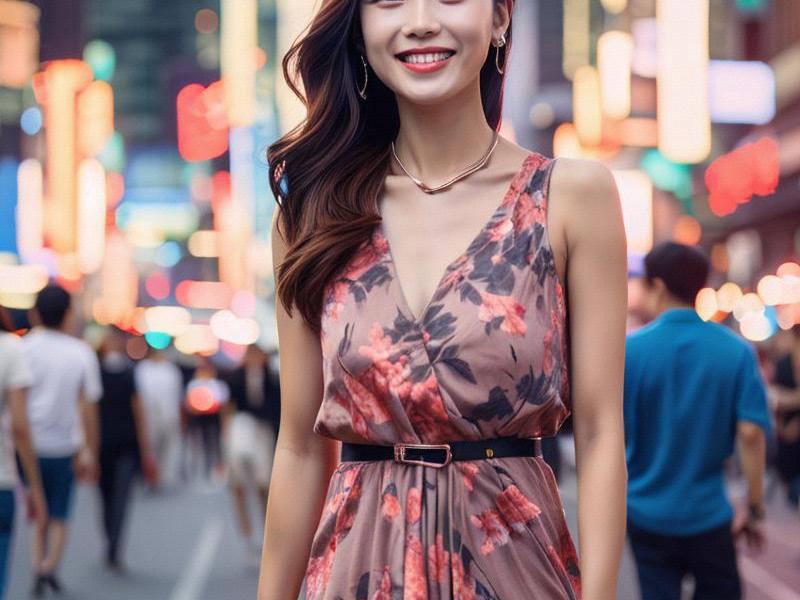
Shanghai, a city that has long been synonymous with elegance, sophistication, and progress, is not just a place on the map but a living, breathing testament to the passage of time. Among its many treasures, one of the most captivating is the legacy of its beauties. These women, both past and present, have left an indelible mark on the city's cultural fabric, shaping its identity and influencing its trajectory.
The concept of the "Shanghai beauty" is not merely about physical appearance; it encompasses a complex interplay of charm, grace, intelligence, and resilience. Over the decades, these women have been the epitome of style, embodying the spirit of their times while also setting new standards for beauty and sophistication.
In the early 20th century, Shanghai was known as the "Paris of the East," a cosmopolitan hub where East met West. It was during this period that the archetype of the Shanghai beauty emerged. Women like Zhou Xuan, the "Golden Voice," and Bai Yang, the "Chinese Garbo," became cultural icons. Their beauty was not just in their physical appearance but also in their ability to captivate audiences with their talent, charisma, and poise.
Zhou Xuan, for instance, was not only a renowned singer and actress but also a symbol of the vibrant nightlife and entertainment culture of old Shanghai. Her songs, such as "Shanghai Nights" and "The Wandering Songstress," remain classics, and her image as a glamorous yet approachable woman continues to inspire generations. Bai Yang, on the other hand, was celebrated for her roles in films that portrayed the struggles and aspirations of modern Chinese women. Her elegance and depth of character made her a beloved figure in both China and abroad.
新上海龙凤419会所 The beauty of these women was not confined to the silver screen or the concert hall. It was also reflected in the city's fashion and lifestyle. Shanghai women of the early 20th century were known for their impeccable taste in clothing, often blending traditional Chinese elements with Western styles. The cheongsam, or qipao, became a symbol of this fusion, embodying both tradition and modernity. These women set trends that were not only popular in Shanghai but also influenced fashion across China and beyond.
As the city evolved, so did its beauties. The mid-20th century brought new challenges and opportunities for women in Shanghai. During the Communist era, the focus shifted from individual glamour to collective strength and equality. However, the legacy of the Shanghai beauty persisted, adapting to the changing times.
In the改革开放时代 (Reform and Opening-Up era) [Reform and Opening-Up period], which began in 1978, Shanghai experienced a renaissance. The city's beauties of this era reflected the spirit of modernization and progress. Women like Yao Ming's wife, Ye Li, and fashion icon Du Juan became symbols of the new Shanghai. Ye Li, a basketball player, represented the rise of female athletes in China, while Du Juan, a model and actress, epitomized the global influence of Shanghai fashion.
Ye Li's journey from a rural village to becoming a national basketball star is a testament to the opportunities that emerged during this period. Her success not only inspired countless young women to pursue their dreams but also highlighted the changing roles of women in society. Du Juan, on the other hand, became a global name, gracing the covers of international fashion magazines and representing Shanghai on the world stage.
上海龙凤419手机 The legacy of Shanghai beauties continues to thrive in the 21st century. Today, the city is home to a new generation of women who are redefining beauty and influence. From tech entrepreneurs to social activists, these women are shaping the future of Shanghai while honoring its rich history.
One such example is Zhang Xin, a real estate mogul and philanthropist. Zhang Xin's journey from a British university to becoming one of the most influential businesswomen in China is a story of ambition and resilience. Her work has transformed Shanghai's skyline, creating iconic buildings that stand as symbols of the city's modernity.
Another prominent figure is Zhao Wei, a renowned actress, singer, and entrepreneur. Zhao Wei's career spans decades, and she remains a beloved icon in China. Her roles in films like "A Time to Love" and "So Young" have resonated with audiences, showcasing her versatility and talent. Beyond her acting, Zhao Wei is also known for her philanthropic efforts, supporting education and environmental causes.
上海花千坊爱上海 The influence of Shanghai beauties extends beyond the city's borders. They have become ambassadors of Chinese culture, representing the country on the global stage. Their stories inspire not only women in China but also people around the world, demonstrating the power of perseverance, creativity, and authenticity.
The legacy of Shanghai beauties is not just about individual achievements but also about the collective spirit of the city. It is a story of how a city's women have shaped its identity and influenced its evolution. From the glamour of old Shanghai to the modernity of today, these women have been the heart and soul of the city.
In conclusion, the timeless legacy of Shanghai beauties is a testament to the city's rich history and vibrant culture. These women, from Zhou Xuan and Bai Yang to Ye Li and Du Juan, and now to Zhang Xin and Zhao Wei, have left an indelible mark on Shanghai's identity. Their beauty, both inside and out, continues to inspire and captivate, ensuring that the spirit of Shanghai remains as captivating as ever.
As Shanghai continues to grow and evolve, the legacy of its beauties will undoubtedly endure. They are not just symbols of the past but also beacons of the future, guiding the city towards new horizons. The story of Shanghai beauties is a story of beauty, resilience, and influence, a story that will continue to be told for generations to come.
